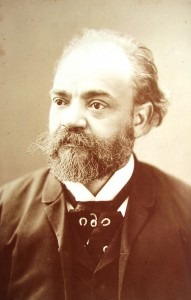 “Minors of the Majors” invites you to discover compositions by the great classical composers that for one reason or another have not reached the musical mainstream. Please enjoy, and keep listening!
“Minors of the Majors” invites you to discover compositions by the great classical composers that for one reason or another have not reached the musical mainstream. Please enjoy, and keep listening!
The 19th Century witnessed a climate that was uniquely favorable to choral singing. It offered the masses, with the eager support of governmental authorities, an ideal outlet for their artistic energies. The repertory predominantly centered on the great choral heritage of the past. Nevertheless, if choral music was to remain a vital force, its literature had to be enriched by new works that reflected the spirit of the time. A list of composers active in this area includes Mendelssohn, Schumann, Liszt, Brahms, Verdi and Antonín Dvořák. For the consecration of a private chapel designed by the Prague architect Josef Hlávka, Dvořák composed his Mass in D major in 1887. Conceived for voices and organ, Dvořák’s publisher Simrock twice refused to issue the work. And the London firm of Novello embraced it only on condition that the composer provided an orchestration of the organ part. Although Dvořák readily obliged, Novello never published the orchestrated score, but issued parts and a piano-vocal score based on the orchestral version of 1892.
Antonín Dvořák: Mass in D major, Op. 86
The “Kyrie” gradually builds from a lilting folk tune, and the contrasting “Christe” relies on a thoughtful and rhythmically uneven minor melody, which undergoes an expressive harmonic transformation. A triadic fanfare, constructed from a rhythmically distinct motive heads the “Gloria” movement. Paying close attention to the text, Dvořák intersperses gentle homophonic adorations with powerful and radiant contrapuntal imitation. The “Credo” is composed in the style of a lullaby and features a dedicated soloist. Unfolding antiphonally, the choir excitedly answers the urging calls of the soloist. This is followed by a gentle musical exchange among all voices and leads into a highly chromatic homophonic section. Diminished fortissimo chords exclaim the crucifixion, while a joyous antiphonal interaction and choral fugue musically depict the resurrection. Dvořák’s folk inspiration emerges once more in the “Sanctus,” as the chorus excitedly engages in a breathless call and response. A mysterious prelude opens the “Benedictus,” with the chorus eagerly imitating this sentiment. The concluding “Agnus” features highly imitative, yet exceedingly contemplative music that is entirely sung by solo voices.
You May Also Like
- Minors of the Majors
Francis Poulenc: Sonata for Trumpet, Horn and Trombone, Op.33 Jean Cocteau magnanimously announced in 1918, that his principal goal was the elimination of all foreign and specifically German elements from French music and culture. - Minors of the Majors
Franz Liszt: Cantantibus organis The 1860’s were not particularly kind to Franz Liszt. For one, the Tsar of Russia successfully blocked his long-awaited marriage to the Princess Carolyne Sayn-Wittgenstein. - Minors of the Majors
Gustav Mahler: Piano Quartet in A Minor Gustav Mahler, son of an aspiring tavern proprietor and a soap-maker’s daughter, was considered a Wunderkind! - Minors of the Majors
Gioacchino Rossini: 3 Choeurs Religieux In 1829, Gioachino Rossini (1792-1868) completed his thirty-fourth opera, William Tell.
More Anecdotes
- Bach Babies in Music
Regina Susanna Bach (1742-1809) Learn about Bach's youngest surviving child - Bach Babies in Music
Johanna Carolina Bach (1737-81) Discover how family and crisis intersected in Bach's world - Bach Babies in Music
Johann Christian Bach (1735-1782) From Soho to the royal court: Johann Christian Bach's London success story - A Tour of Boston, 1924
Vernon Duke’s Homage to Boston Listen to pianist Scott Dunn bring this musical postcard to life
